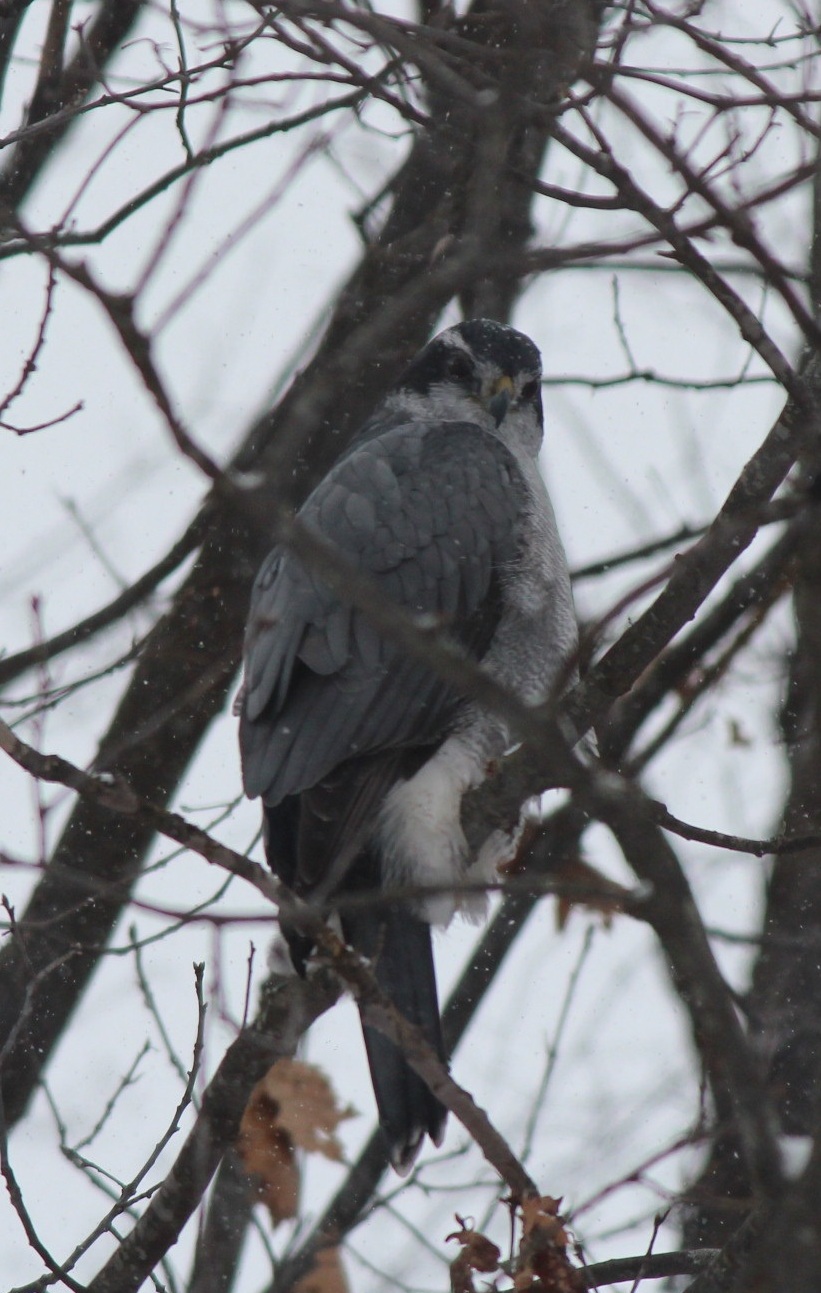Northern Goshawk takes its name from the old English word for goose, a testament to the significant power of this large forest hawk. It is also known by its curious scientific name Accipiter gentilis, which loosely translated means the gentle or noble hawk. Words for Birds, a fascinating lexicon of North American birds by Edward Gruson notes that in Chaucerian English, gentle is a synonym for noble. I prefer this interpretation, for the Goshawk is anything but gentle.
Judy Davidson sent me the accompanying picture that her husband Rick took in his backyard on January 21st. The next day I saw one fly past my office window at the Harris Center, coming from direction of the birdfeeders. It is not customary for Goshawks to visit backyards to prey on feeder birds; this is the provenance of Sharp-shinned and Cooper’s Hawks. Goshawks are more likely to take large prey as befits their impressive size. I saw one take down a mallard in my Hancock backyard several years ago. Attila the Hun appreciated their aggressive attitude enough to wear a helmet adorned with their likeness, and they will even defend their nest against human intruders.
The species preference for larger game, including grouse, ducks, rabbits, and hares led to them being known as the cook’s hawk among falconers. However, they have also been mercilessly persecuted. Pennsylvania’s Game Commission placed a $5 bounty on the species in 1929, a handsome return on the price of a shotgun shell, especially at the outbreak of the Great Depression. The slaughter of this and other hawks and falcons at places like Hawk Mountain brought forward efforts to protect all birds of prey.
Goshawks were rare in New Hampshire from the 1700’s through the late 1800’s, when the state was largely deforested. They returned gradually beginning in the late 18th and early 19th century as agriculture diminished and the forest returned. The species is now an uncommon but widespread breeding bird in mature forests with open understory, and it remains with us through the winter in small numbers. They are a bit more common in spring and fall when migrants move through the state to and from breeding territories to our north, though the extent of this migration varies with food supply. When snowshoe hare and grouse populations are low, this bird can be seen as far south as Virginia, where it sets birders phones ringing just like Snowy Owls do up here.
If you see any interesting sightings like Northern Goshawk, consider reporting them to ebird at www.ebird.org Ebird is an online database of sightings of birds across the continent and provides useful data on bird distribution and abundance. You might also enjoy New Hampshire Bird Records, www.nhbirdrecords.org, a quarterly publication devoted solely to the birds of New Hampshire.

4 Responses to “Northern Goshawk”